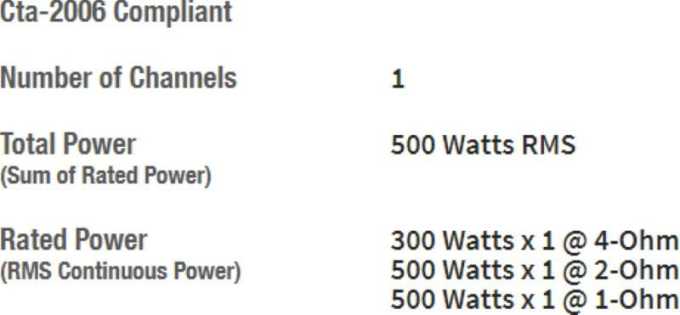Floating-face car radios are popular because of their flexible installation options and relatively massive displays. The Sony team has been hard at work updating their products, and the new 10.1-inch XAV-AX8500 digital multimedia receiver is their latest offering in this hot market segment. Let’s see what’s been added to the platform to keep it at the forefront of the category.
High-Definition 10.1-inch Floating Face Display
The first thing you’ll see in the XAV-AX8500 is its classy 10.1-inch HD display. The screen has a resolution of 1280 by 720 pixels. The touch panel has an anti-glare coating and features a capacitive-touch interface. Compared with a resistive-touch interface, the capacitive design obscures the display less, making the information on the display easier to see. The gapless design around the screen lets it blend into the display chassis. Sony leads the industry in clean and classy styling. While it might not be flashy or attention-grabbing on a display board, it looks as though it belongs in your car or truck rather than at the helm of an intergalactic spacecraft.

One of the most interesting features of this model is the multiple adjustments that can be made during and after installation in the dashboard. During installation, your technician can set, in relation to the chassis, the vertical height, the horizontal left to right position, and the depth between the screen and the chassis mount, and can tilt the screen forward and back to accommodate most dashboard slopes.
After installation, during normal use, you can adjust the screen position, with no tools or disassembly. You can swivel the screen up to 15 degrees left or right to fine-tune the viewing angle in relation to your seating position or for a passenger to view it easier, and tilt the screen forward or backward up to 15 degrees as well to mitigate any direct sunlight shining on it or to improve visibility.
The screen interface is similar to what we experienced in the XAV-9500ES Test Drive Review, with five icons across the bottom. You can pull up a complete list of additional source and setting options and swap any of them into these five primary locations. You can also upload custom wallpapers to the radio to add some personalization or choose from several preset color schemes.
This radio includes six physical buttons along the bottom of the display, making it intuitive to adjust the volume, change sources or activate voice recognition for CarPlay and Android Auto. Hard buttons, as they are called, are crucial to using the radio while keeping your eyes on the road.

Source Features
Nowadays, most people stream music from online services like Pandora, iHeartRadio or Spotify. The XAV-AX8500 includes Bluetooth streaming with radio-based control over track selection. As a Sony product, this unit also includes the high-quality LDAC codec to improve performance with modern Android-based smartphones.
Apple CarPlay and Android Auto smartphone integration is included, and wireless connectivity means your phone connects just after the radio finishes booting. Speaking of which, the Quick Wake-up design ensures that you have a rearview camera image and music playing seconds after you start the vehicle.
Of course, you can connect a USB memory stick to play MP3, WMA, WAV, ACC, FLAC, ALAC, DSF and even DSDIFF audio files. You can view AVI, MKV, MPEG-4, WMV and ASF video files to pass the time when parked. Speaking of video, there’s a micro-HDMI input beside the USB-C port on the rear panel that will work with a smartphone, laptop or even a media player. It supports video file resolutions up to 720p.
The integrated AM/FM receiver includes RBDS to show station information so you know what track is playing. Your installer can add a SiriusXM satellite radio receiver at installation time for uninterrupted entertainment from coast to coast.

Vehicle Integration and Safety Features
A significant highlight of the Sony XAV-AX8500 is that it supports the iDatalink Maestro RR and RR2 vehicle integration modules. If a Maestro RR is available for your vehicle, the radio can communicate with the vehicle computers to display information like speed, engine rpm, etc. In some applications, Maestro RR interfacing includes climate control and vehicle setting menus. Check with the retailer you’re working with for additional details.

Regarding audio features, the radio has a four-channel amplifier rated for 20 watts RMS per channel into a 4-ohm load at less than 1% THD+N. The front, rear and subwoofer preamp outputs can produce 5 volts of signal, so the gains on amplifiers can be set nice and low.
On the topic of audio features, the radio has a 14-band graphic equalizer and adjustable high-pass crossovers for the front and rear powered and preamp channels. A subwoofer crossover with polarity and level control for the preamp signal is also included. Signal delay settings are available for the front, rear, and mono subwoofer output to fine-tune the soundstage and imaging in your vehicle. Be sure to ask your installer about configuring these features during installation.
The Sony has a dedicated backup camera input and two additional video camera connections that can be used with a forward-facing camera or blind spot monitoring solutions. These camera inputs can be integrated with the Maestro module for automatic activation in a supported vehicle, or by the hardwire triggers included in the video harness. The radio includes an external Bluetooth microphone to optimize outgoing voice clarity.

Upgrade Your Vehicle with the Sony XAV-AX8500 Digital Multimedia Receiver Today!
If you’re shopping for a high-performance radio for your car, truck or SUV, visit an authorized Sony car audio retailer and ask about the new XAV-AX8500. Be sure to bring your smartphone to experience the intuitive interface and the fantastic responsiveness in person. For more information about this radio or any of Sony’s car audio products, visit their website or Facebook page.
This article is written and produced by the team at www.BestCarAudio.com. Reproduction or use of any kind is prohibited without the express written permission of 1sixty8 media.






























